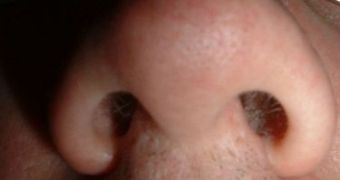Quadriplegics that also loose their ability to speak are called “locked-in” patients, because their brain functions normally but they cannot communicate or interact with the world. Neurobiologist Noam Sobel of the Weizmann Institute of Science in Rehovot, Israel found a way for these people to escape their own body's trap, by using sniffing.
After studying the human sense of smell, he and his team created a device that releases an odor when a person sniffs. Then they realized that the machine could be configured to respond to different sniffing intensities and that it can be of use to “locked-in” patients. Sobel says: “We thought you could use this sniff to control anything. You could even fly a plane.”
For testing the device, the team connected several subjects to it and measured their flow in several types of sniffing. Afterward, scientists wrote two computer software that translate sniffing into typing and wheelchair movement. In the typing program volunteers could chose a highlighted letter on screen by sniffing once and in the wheelchair program, the direction of the wheelchair was given by inhaling or exhaling and sniffs' timing.
To test the final version of the software, the team observed how well 36 people typed phrases like “comfortable and easy to use” or made coordinated K-turns near a car. Results showed that healthy subjects managed to type and navigate by sniffing, almost as well as they did with their hands. When the device was finally tested on patients it had a 100% success rate. Patients were able to move their wheelchair and even write letters to Sobel thanking him for this second chance.
The whole idea for this device came to Sobel as he found out about patient LI1, a woman that completely lost her ability to communicate with the outside world, as she could not even blink her eyes. Now, seven months later, she can write e-mails to her loved ones just by sniffing, ScienceNow reports.

 14 DAY TRIAL //
14 DAY TRIAL //